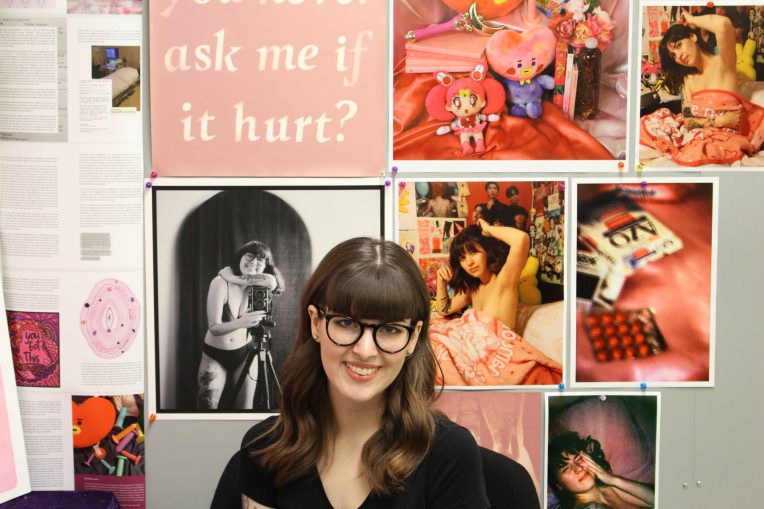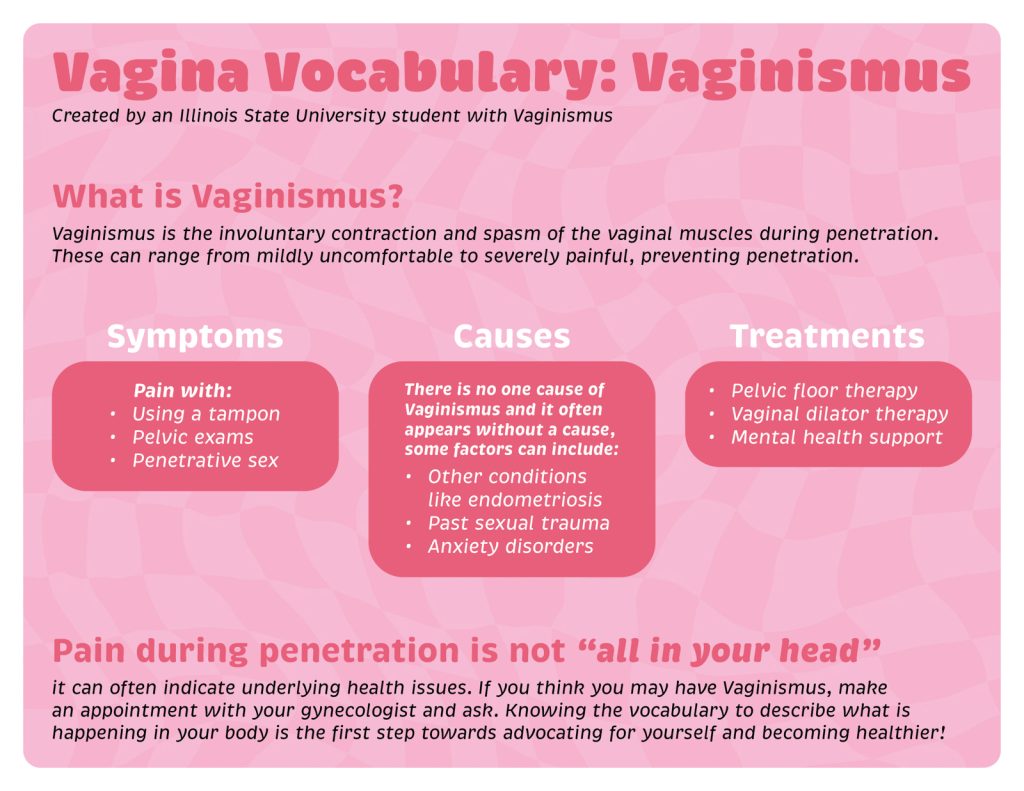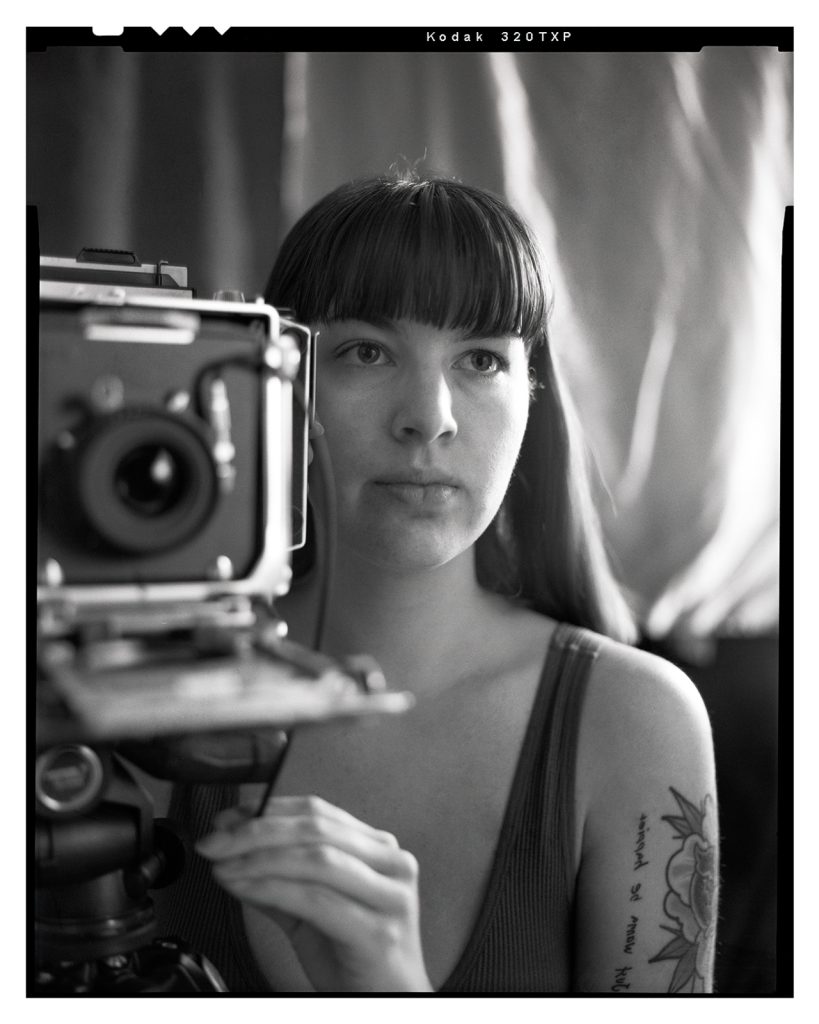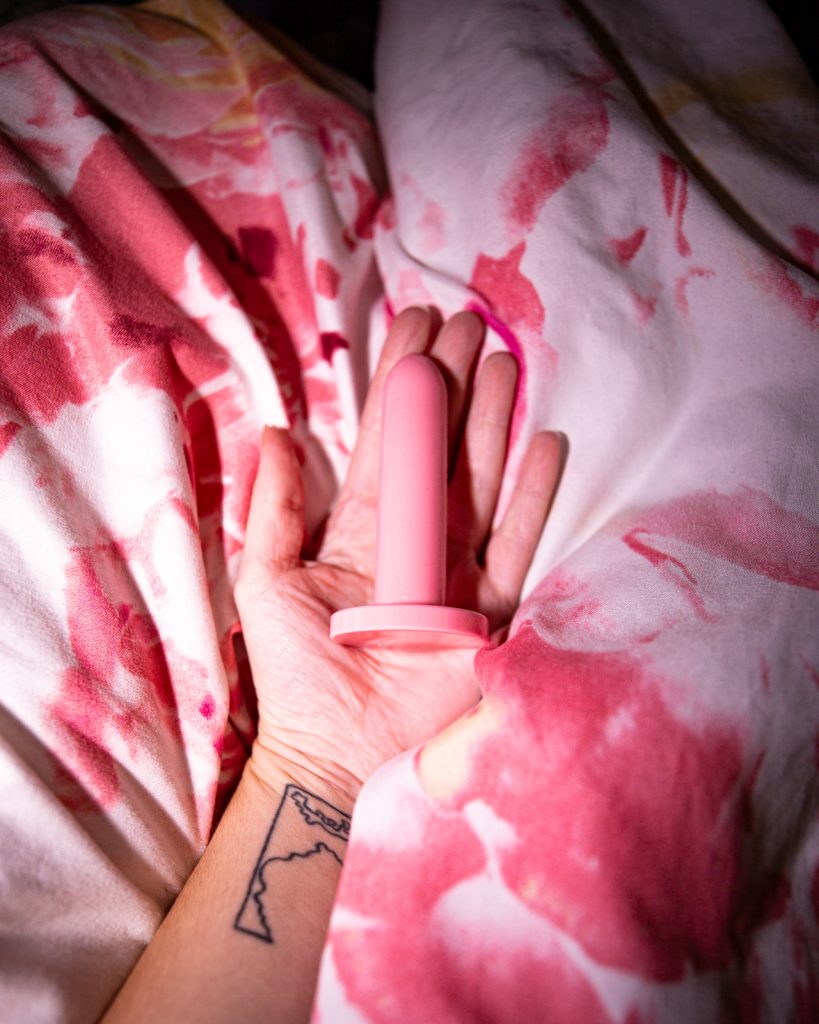The Graduate School has selected Sarah Eckstine as its April GradBird Scholar recipient. GradBird Scholar is an initiative to recognize graduate students for their scholarly endeavors at Illinois State University.
Before coming to Illinois State to pursue her Master of Fine Arts degree, Eckstine received her Bachelor of Fine Arts in Photography from the Maryland Institute College of Art in 2020. While her main practice involved self-portrait photography, Eckstine’s passions outside of her studies also involve other types of photography. She was raised in rural Maryland and her early photographs were first taken on her family farm and have now expanded to traveling to national parks across the country to take pictures.
Music is also a huge influence in Eckstine’s life and photography as well, “I started photographing concerts and my favorite bands at the age of 14. Being immersed in that community, introduced me to the concept of straight edge, a subculture born from the hardcore music scene whose adherents refrain from using drugs and alcohol,” Eckstine said. “I’m very happy that photography has allowed me to advance in academia, travel to new places, and become friends with those who share my mindset.”
What is your favorite part of the Wonsook Kim School of Art?
The Master of Fine Arts (MFA) program at ISU is fairly small, which allows us the opportunity to work much more intimately with our peers and professors. On the flip side, the smaller numbers also allow us a lot of time to work independently and in a self-driven manner. I find myself thriving in those ways of creating; spending hours upon hours by myself in the darkroom is always my favorite part of the semester and a rewarding experience. While I appreciate what digital photography has to offer, I find myself drawn to analog forms of the medium that allow me to be as hands-on as possible. I am lucky to have the resources that allow me to work with 35 mm, medium and large format, lumen, cyanotype, tintype, and bookmaking processes.
Do you work with a specific faculty/staff member to help with your research?
I am very fortunate to have mentors from both the MFA and Women’s, Gender, and Sexuality Studies (WGSS) programs while at ISU. My thesis committee members from the School of Art, Jason Reblando, Jin Lee, Dr. Melissa Johnson, and Ruth Burke, all talented artists and academics themselves, have been instrumental in pushing me in the right direction to advance my work whether that be through artist recommendations, books, or new photography techniques. They are also great listeners for those days when everything just seems to be working against you. In completing the WGSS graduate certificate along with my MFA, I have the pleasure of working with the brilliant Dr. Alison Bailey for the more research-oriented part of my practice that covers female sexual dysfunctions and feminist interventions in women’s health. I also would not be anywhere without the other half of the photography graduates: my soulmate, best friend, and world’s greatest camera focuser, Jade Nguyen.
Can you explain your research and its importance within your field?
My artistic practice is focused on my life and my body as they interact with chronic illness, chronic pain, and healing. At a young age, I was diagnosed with interstitial cystitis, a bladder disease, and was additionally diagnosed with the sexual dysfunctions of vaginismus and vestibulodynia after years of being misdiagnosed and not having my pain believed by medical professionals. These dysfunctions, which are characterized by severe vaginal, pelvic, and penetrative pain, were the source of a lot of anger and depression in my early adulthood, but I began to channel those emotions directly into my artwork as a way to productively work through them. My practice utilizes digital, analog, and alternative process photography, writing, and text-based imagery to create self-portraits and autobiographical work about the subjects surrounding sex: both in its pain and pleasure, and my process of healing both physically and mentally. In my work, I include my body as well as medical imagery and therapy devices such as MRI scans and vaginal dilators to introduce objects and procedures that might seem taboo, frightening, or difficult to approach in visually compelling ways. My work provides an archive of my health and healing and functions as a means of catharsis but also works to open space for the discussion of female sexual dysfunctions and provide a place of comfort and understanding for those living with the same conditions.
Why do you enjoy researching this topic and what more do you hope to learn about it?
I enjoy the work I do, especially with photography, because it allows me to create a visual archive of my body and health that I can watch change over time. I have been taking self-portraits since high school and in 2022 alone I took over 100, mostly on film. Being chronically ill, I found myself drawn to documenting my body during times when it was in distress and then again when I have become healthier. It’s a very validating experience to be able to compare the two and watch acne, scars, heating pad burns, and other physical body ailments heal, and it’s fascinating seeing my hair grow or become different colors and watching my body fill up with more and more tattoos. Using a self-documentary style of photography helps me prove to myself that I survived a traumatic event or procedure and came out healthier. I was drawn to incorporating more research into my practice at first simply to learn more about the medical side of the conditions I had but found that it also led me to memoirs, blogs, and other artists writing about their experiences which have become very inspirational to my practice. I hope to continue working in the intersection between medical research and lived experiences to learn more about others as well as myself.
What do you hope further research about this topic will do to benefit the greater of society?
While the root of my work is autobiographical, the content allows it to expand to larger spheres as female sexual dysfunction, while very common, is often left out of conversations and research due to negligence, sexism, and misogyny in female health services and the normalization of female sexual pain. The utilization of visual art paired with color palettes that are inviting and playful offers an entry point into these topics that can be both comforting to those who feel isolated in dealing with the same conditions and informational to those who are unaware.
This semester, I began working with the WGSS department to create and distribute information about the most common female sexual dysfunction, vaginismus, which causes painful, involuntary vaginal muscle contractions upon penetration whether that be from a tampon, pelvic exam, or penetrative sex. This information, presented in the form of a printed flyer, adopts what artist Paulina Siniatkina coined as a patient-to-patient approach, where the design and text were created by me, someone with vaginismus. By using this method, I am employing the language and knowledge I wish I would have been presented with during my time as an undergraduate student to have the vocabulary to talk about what was happening in my body. Two hundred flyers were installed across ISU women’s, men’s, and gender-neutral restrooms on Valentine’s Day in 2023. The flyer’s primary demographic is young college students who have experienced vaginal pain so they can be more informed about their bodies but also functions to raise awareness for the general university population. It is my hope that further discussion of these conditions in artwork and research alike can destigmatize dialogue around female sexual pain and eventually reach a point where one else will have to experience the pain I did at the hands of medical professionals and an ignorant society.
Would you like to highlight anything else about your research or promote anything specific you are involved in?
I would like to thank the GradBird Scholar initiative for recognizing the visual arts and MFA program. Our field is often left out of conversations regarding research and advanced academia and I am both honored and excited to be able to share my work with the larger Illinois State community. More of my visual work can be found on my website www.saraheckstine.com.






